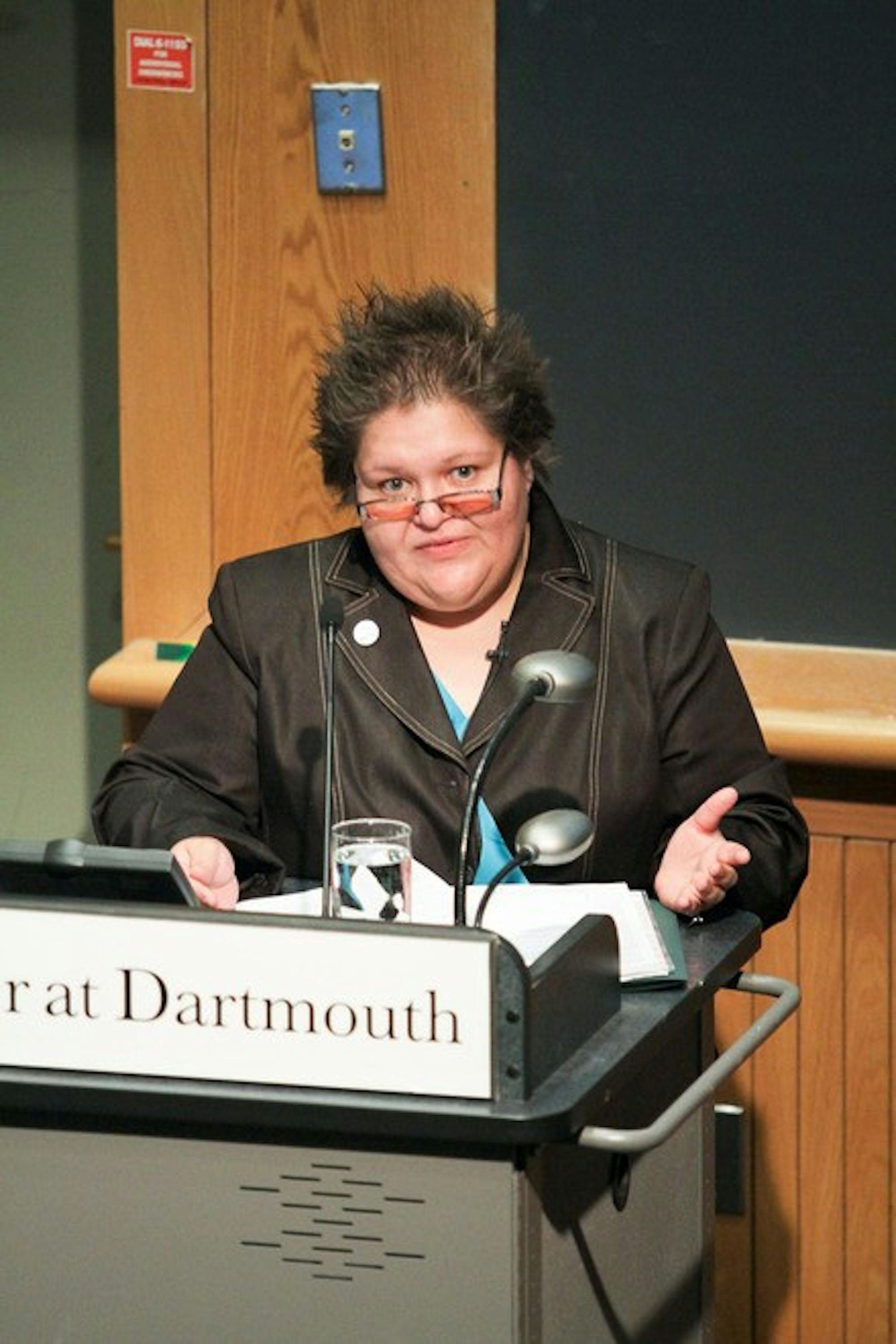Salas founded the Peace of Art project in 2010 to educate communities about violence in the borderland between the United States and Mexico. Salas' family still resides in Juarez, and her personal ties to the city motivate her artistic initiative.
"If somebody like myself who grew up there doesn't care, what can I expect of any other person, right?" Salas asked audience members.
Salas approached graphic designers in both countries who had "ties to the borderland" to share their perspectives on the region's situation through their artwork. Salas said the art served as a useful tool to encourage dialogue about such a sensitive issue.
"Most people did not want to hear about the problems, but were willing to look at a poster," Salas said.
Although Peace of Art was originally intended to be a one-night exhibit, its opening night was so successful that its founders decided to make it a travelling exhibit in order to raise awareness about the violence and raise funds for its victims through art sales, Salas said.
The lecture began with a short video that displayed images of deaths, crime scenes and graves amid sounds of gunshots and sirens.
Over 3,000 drug-related deaths occurred in the region in 2010 a figure that is 10 times higher than the number of deaths in 2007 anthropology professor Lourdes Gutirrez Njera said in her introduction to the lecture.
Juarez lies south of the Texas-Mexico border and neighbors El Paso, Texas. While Juarez has the highest murder rate in the world and is rife with corruption, poverty and drug violence, El Paso was ranked the second safest city in the country in 2010, Salas said.
Although the two cities were separated when the Rio Grande became the official border between the United States and Mexico, the two populations remain inextricably linked, according to Salas.
"This one city became divided but they've always shared a culture and seen each other as sister cities," she said. "Whatever happens on each side of the border whether it is social, economic, spiritual affects the other side."
The violence between drug cartels and police in Juarez has only escalated since Mexican President Felipe Caldern declared a military offensive against cartels in 2006, Salas said. She said she hopes her exhibit will educate audiences about the situation in Juarez and encourage them to act against the social injustices that are occurring every day.
"I think it's important for us to care because we are citizens of the world," Salas said. "We are a global society, dependent on each other."
Salas encouraged audience members to educate themselves, raise awareness and avoid becoming part of the problem by using illegal drugs.
"If you don't care, I want to make the invitation to you guys that whenever you see any form of social injustice, stop and think about your role in it," she said.
Annie Jones '11, who is from the border city McCallen, Texas, said she is glad that Salas' project has raised awareness of the violence in Mexico "in places as far away as Hanover."
"I hope that this presentation encourages Dartmouth students to consider their own connection to the casualties inflicted in Mexico's drug wars," she said.
The lecture, "Peace of Art: Mobilizing Art for Justice on the U.S.-Mexico Borderland," took place in the Rockefeller Center and was cosponsored by the Bildner Program, Women in Business, the Leslie Center for the Humanities, the Rockefeller Center for Public Policy, the Tucker Foundation, the Center for Women and Gender, the John Sloan Dickey Center for International Understanding and the Latin American, Latino and Caribbean studies department.




